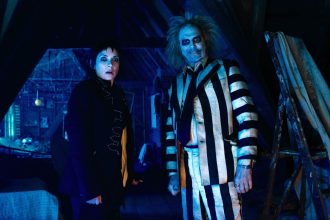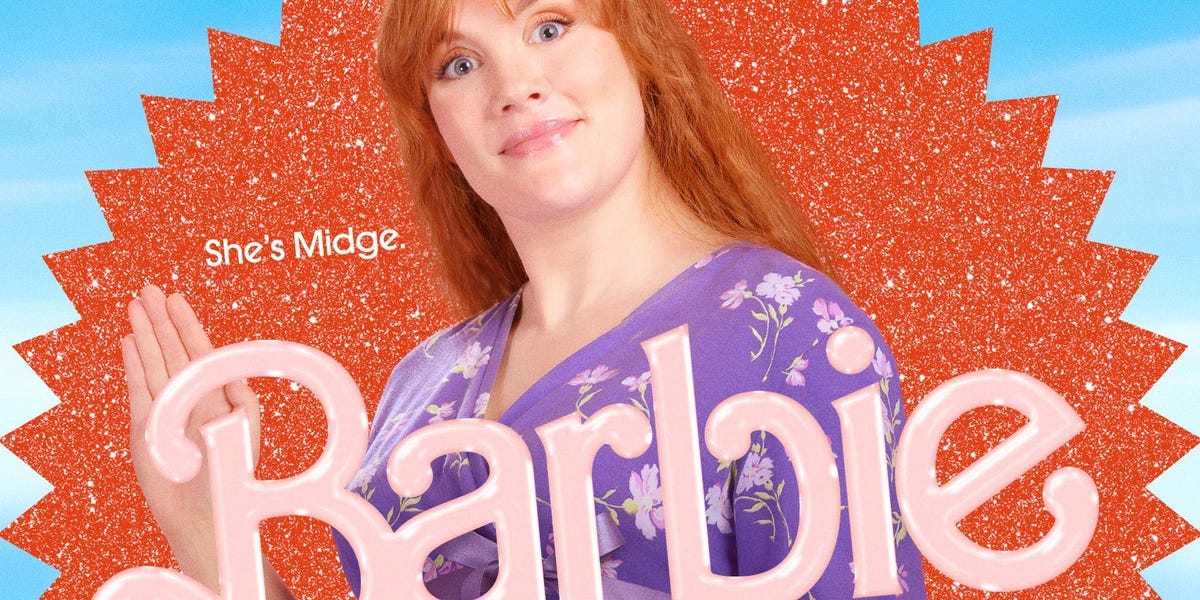- Mattel’s Midge doll may have failed in the 1960s because she was “less glamorous” than Barbie, Ruth Handler once said.
- Midge had the same body shape as Barbie but a “much more girl-next-doorish” look, Handler wrote.
- A pregnant version of the doll, referenced in Greta Gerwig’s movie, was pulled from Walmart in 2002.
Midge, the pregnant character mocked in Greta Gerwig’s “Barbie,” was originally released in the 1960s but was taken off sale just years later due to poor sales, perhaps because she was less glamorous than Barbie, creator Ruth Handler once said.
Midge, played by Emerald Fennell in the new movie, was introduced as “Barbie’s best friend” in 1963. A TV advert said that Barbie, Midge, and Ken “go everywhere together,” including sunbathing on the beach, playing tennis, and attending school.
A few months later, Mattel started manufacturing a red-haired boyfriend for Midge, Allan, also known as “Ken’s buddy,” who worked at a soda fountain. Allan similarly features in the movie, played by Michael Cera.
Midge was given bright blue eyes, a “flip” hairstyle, available in blonde, brunette, and red, and a two-piece knit swimsuit. Various other versions of the doll were also released, including one that didn’t actually come with a body and was just a head and a series of wigs.
Midge had the same body shape as Barbie so that she could wear the same clothes, but her face was very different, and Handler speculated that this could have been the doll’s downfall.
“Her face was wider, friendlier, and freckled, giving her a look that was much more girl-next-doorish than the glamorous Barbie (which is probably was Midge was ‘dead’ on the market within a few years, and we stopped making her in 1967),” Ruth Handler wrote in her autobiography “Dream Doll.”
Even though Midge was discontinued, her head mold was kept and Mattel used it to develop PJ, Barbie’s “new and groovy” friend, in 1969.
Midge was eventually brought back in 1988 with the release of California Dream Midge, which had more voluminous hair, an electric blue visor, mismatching earrings, and roller blades, and years later she went on to marry Alan, whose name had undergone a spelling change. Ken was the best man and Barbie was a bridesmaid.
But Midge really began to garner public attention in 2002 when Mattel released a pregnant version of the doll, available in both white and Black versions.
She came with a detachable magnetic stomach into which a small plastic baby could fit.
Mattel at the time cited an interview with a University of Southern California psychologist, who said that the Happy Family doll set – pregnant Midge, Alan, and son Ryan – would “complement children’s strong interests in family relationships, and supports their social and emotional development,” per CNN.
A note on Mattel’s website said that the set was “a wonderful prop for parents to use with their children to role-play family situations — especially in families anticipating the arrival of a new sibling,” per AP.
But shoppers didn’t think so. Walmart pulled the sets, with a spokesperson telling CNN at the time that customers “were not happy” with the pregnant doll.
“A pregnant doll is just too weird,” the movie’s narrator says in “Barbie.”
Mattel went on to release another version of the doll postpartum, with no trace of pregnancy and a cut out of Alan and Ryan in the background of the box. Dolls of Midge’s parents – just known as “grandma” and “grandpa” – were also released.
Midge also starred in “Barbie: Life in the Dreamhouse,” an animated show that was broadcast online from 2012, and accompanying dolls were released.
To celebrate Midge’s 60th anniversary, Mattel this year released a $55 vintage reproduction doll, designed to look like the original from 1963.
Read the full article here





